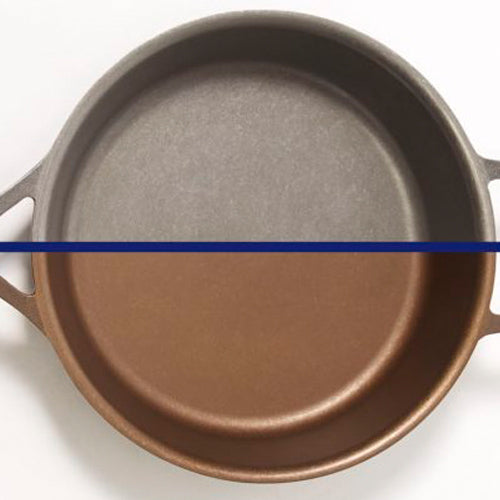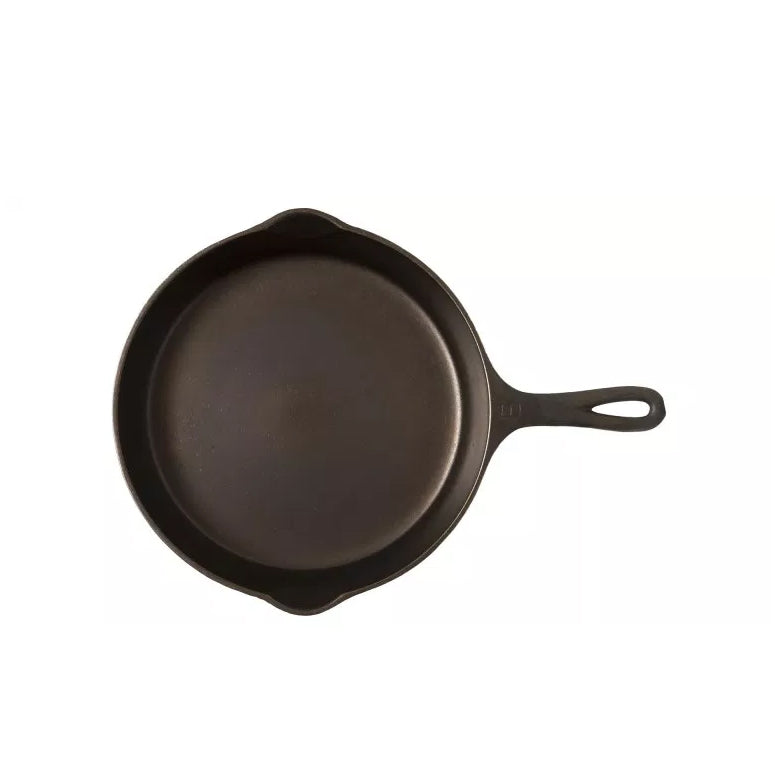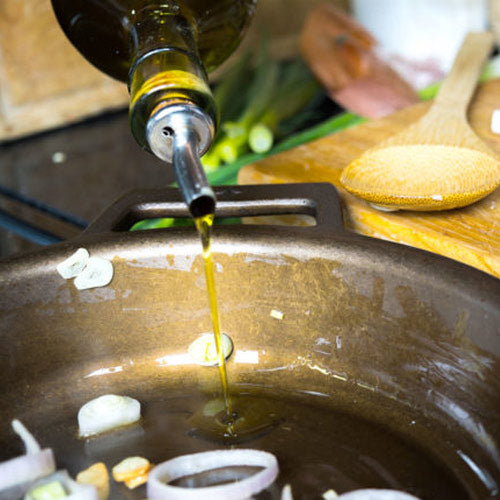We get a lot of questions about cast iron seasoning and maintenance, so we thought it would be a good idea to get a discussion going on the blog. In this post, we’ll take a look at the overall concept of seasoning and define and clarify some terminology. Specific questions about the different types of seasoning oils and the seasoning process will be addressed in later posts.
Defining Seasoning
In the simplest terms, cast iron seasoning is a layer of fat or oil that is baked onto the iron to protect it and aid in its non-stick properties. The bare iron is coated with oil both inside and out, and when heated, the oil goes through a chemical change called polymerization, transforming the liquid oil into a hard shell. After polymerization, this layer of seasoning is surprisingly durable.
You’re probably wondering: how much heat is needed to for this chemical change to take place? The answer is that it depends on the type of oil being used. Different oils have different smoke points, which is exactly what it sounds like: the temperature at which that oil starts to smoke. Pretty simple, right? If you heat an oil past its smoke point, it will polymerize and become seasoning. In general, oils with higher smoke points work best for seasoning cast iron.
Despite its name, cast iron seasoning does not affect the taste of your food. There are some who insist that the seasoning holds flavor, and the taste of past meals will find its way into whatever you’re currently cooking. This is not only hard to believe, but also a bit gross, and we’ve found little evidence to support it. Seasoning will build up over time as additional oils get cooked onto the iron, but you shouldn’t be able to taste yesterday’s burgers in tonight’s seared salmon, assuming you cleaned your skillet properly.
Note: Seasoning is both a noun and a verb. The noun refers to the layer of polymerized oil; the verb refers to the process of applying and heating this oil.
Seasoning vs. Oiling
While the term seasoning is typically defined as we discussed above, there is some confusion about what exactly people mean when they refer to seasoning a cast iron skillet. As a standard practice, some cast iron users will wipe their skillet down with a light coating of oil after each use. While this isn’t a necessity, it’s certainly not a bad idea in order to add an additional layer of protection from rust. Often times people will refer to this practice as seasoning, but that is a misnomer, because in this case, the oil remains in a liquid state.

Heat is the key difference. Even if you are applying the oil to a relatively warm skillet, it’s not being heated long enough or hot enough to polymerize, unless of course you’re a superhero who can shoot fireballs out of your hands. On a related note, if you are going wipe your skillet down with oil after every use, make sure you are using the skillet regularly. Most commonly used cooking oils have a shelf life, and they will eventually go rancid (unless they’re polymerized).
That’s all for today. In subsequent posts, we’ll get more into the nitty gritty of cooking with and maintaining your new (or newly seasoned) cast iron skillet. And don’t worry, all this information won’t be on your next quiz! We just wanted to get this info down in one place, so feel free to share with all your friends who see the amazing Stargazer skillet you own and start asking you a bunch of questions about cast iron skillets.
We hope this post helped clear up a couple things and answer a few questions, but if you have any additional questions or want to share some of your own thoughts, feel free to give us a shout in the comments below! We can talk cast iron all day long! Until next time...




Leave a comment
This site is protected by hCaptcha and the hCaptcha Privacy Policy and Terms of Service apply.